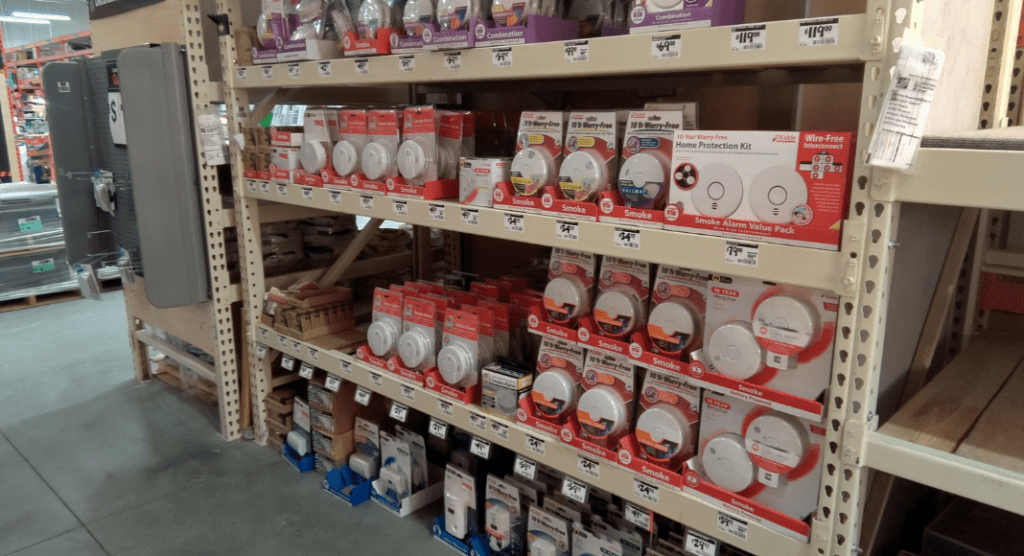“What’s that beeping?” I asked.
Beep. . . beep. . .beep. . . .
Every minute there was a distinct chirp from somewhere in my house.
I checked the fire alarms and carbon monoxide detectors in the various locations throughout my home. Nothing.
I even went outside to make sure the laundry vent and other ducts were clear from our recent snow.
“I think it’s coming from your room, Mom,” my six-year-old says. He’s now in on the investigation.
We stand there listening. Sure enough, “Beep!”
I dig in my closet to discover a beeping carbon monoxide detector. When I unpacked from our cross-country move, I had shoved this stray carbon monoxide detector into my closet. Now several months later, it was reminding me of its presence.
Fortunately, the beeps signaled that it had a low battery. But as I examined the alarm, I noticed that there was an expiration date. What!? What else didn’t I know about carbon monoxide safety?
Clearly, keeping a detector in my closet was not helpful.
To protect my family, I needed to get a little savvier about carbon monoxide safety. This is what I learned.
 Carbon Monoxide 101
Carbon Monoxide 101
What is Carbon Monoxide?
Carbon Monoxide is a colorless, odorless, tasteless gas. Without the proper ventilation, it can come into your house through common appliances, like central heating systems, water heaters, gas fires, etc.
Why is this a risk to my family?
If there are large pockets of carbon monoxide, it replaces the oxygen needed to breathe. This affects hearts and lungs and can cause “flu-like” symptoms. Extended exposure or exposure to large amounts can cause death. According to the CDC, “Each year, more than 400 Americans die from unintentional CO poisoning not linked to fires, more than 20,000 visit the emergency room, and more than 4,000 are hospitalized.”
How do I keep my family safe?
Use your appliances properly and keep them up-to-date on any inspections and maintenance. Install carbon monoxide detectors along with fire alarms.
Carbon Monoxide Detectors—The Advanced Course
I would guess that most of us are familiar with the above information. But there were all these other questions floating around in my head. Turns out, as I talked to fellow moms, I wasn’t the only one who didn’t understand all the ins and outs of carbon monoxide detectors. Read on to see what I learned.
Where should you install your carbon monoxide detector?
This confused me because the previous owners had installed carbon monoxides next to the floor in our house. After a quick check online, I discovered that carbon monoxide is a light gas. Turns out the previous homeowners had installed all of our carbon monoxide detectors incorrectly! Experts recommend that detectors be about five feet from the floor on every level of your home, near sleeping areas, and near attached garages.
However, don’t place them near fuel-burning appliances, in direct sunlight, near blowing air (a vent, fan, or open window), or in a humid area like a bathroom.
Carbon monoxide detectors expire!?
I was surprised when I discovered that the carbon monoxide detector I pulled out of my closet had an expiration date. Carbon monoxide detectors only last five to ten years, depending on the manufacturer. The material used to detect carbon monoxide breaks down over time. I set an alarm on my electronic calendar to help me remember when ours expire (although most detectors have an end-of-life beep).
What’s the difference between a carbon monoxide detector and monitor?
A carbon monoxide detector will give off an alarm if carbon monoxide inside your home rises above a certain, poisonous level. A monitor, in contrast, gives you the actual CO reading (and most also have an alarm). Experts recommend monitors for families who have small children or elderly people, as they may be more affected by lower levels. However, carbon monoxide monitors are more expensive than detectors. The most important thing is to have a detector or monitor that will alert you if levels are high in your home.

There are so many choices when choosing a carbon monoxide detector. Here are the main things to consider:
- Look for battery-operated or battery-backup options (in case the power goes out).
- Read the manufacturer’s recommendations. Each model is tested according to the manufacturer’s specifications. For best protection, follow the recommendations.
- Check local regulations for carbon monoxide detectors (especially if planning on selling your home). Different cities have different standards.
- Look for the UL label—Underwriters Laboratories standard. This a global safety certification. Also, take note of the expiration date!
House expert Bob Villa (whom my mom loves) recommends vacuuming detectors and fire alarms (with the cover on) once a month and testing their alarms weekly.
What does it mean if my carbon monoxide detector is beeping?
There are several different meanings if your carbon monoxide detector is beeping. Look at your carbon monoxide detector manual or Google the specific manufacturer to educate yourself. Generally, though, there are beeps for low battery, the detector’s end of life, and high levels of carbon monoxide. Just don’t ignore beeps! Be sure to know which is which before the beeps start! If in doubt, go outside. I’d like to think, the more annoying the beeps, the more important it is to take heed!
Check Your Detectors REGULARLY!
We have so many safety things to think of as moms: Is the car seat installed correctly? Are my kids remembering to wear their bike helmets? Etc., etc., etc.
It can feel overwhelming.
But I love the quote by author Maya Angelou: “Do the best you can until you know better. Then when you know better, do better.”
Don’t beat yourself up, but take control of the information you have and use it to protect your family.
For me, that means I will now, for the first time in my life, REGULARLY CHECK MY DETECTORS!
So, if this is new to you, too, set your phone alarms for weekly and monthly reminders.
Or, as James Clear recommends in his book Atomic Habits, attach this chore to one you already do. For me, that’s weekly taking the garbage bins to the curb.
Now my chore is the following: take the garbage to the curb AND check detectors.
Here’s to keeping our families safe.
Additional Resources:
The Nebraska Regional Poison Control website
The Iowa Poison Control Center Website
If you live in Omaha, you can request that a carbon monoxide detector be installed in your home for free.
Also, follow the Omaha Fire Department for more great tips like this one: Carbon Monoxide Safety.
Fun graphic showing where carbon monoxide detectors and fire alarms should go in your home

















